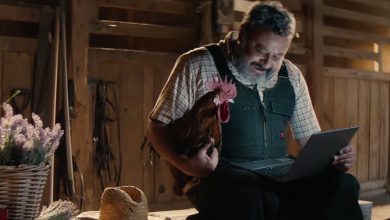MANILA, PHILIPPINES — Philippine advertising is ever evolving, with more and more works not just displaying the dynamic creativity and innovation that exemplifies the industry, but also garnering much-deserved recognition for it. From prestigious award shows in the Philippines to iconic international stages like Cannes Lions, Filipino creativity didn’t fail to make its mark. One campaign, in particular, was recognized with just about every shortlist announcement, and most of the time, snatched a win not long after each one.
Going viral once during its rollout wasn’t the end for McDonald’s Unbranded Menu by Leo Burnett Manila. The campaign made a splash throughout the 2023 awards season with a Silver and Bronze at Cannes Lions, Two Golds and Silver at Spikes Asia, and a Mad Stars Grand Prix on top of six more metals. Most recently, it took home four Best of Discipline Awards at the 2023 ONE Asia Awards, along with several Golds and Silvers.
For a behind-scenes-look into the making of the decorated campaign, adobo Magazine had a chat with three of the creative leaders from the team who made it possible: Leo Burnett Creative Director and Head of Art Carl Urgino, Associate Creative Director Brian Lumanog, and CCO Raoul Panes.



The McDonald’s“foodalike” that started it all
When the Philippines’ number one gaming personality Alodia Gosiengfiao-Quimbo spotted a burger that looked like the classic Big Mac in the world of Grand Theft Auto, her #ThisIsMcDonald’s post, as intended by Leo Burnett, acted as a challenge: Can other people also find McDonald’s lookalikes (or “foodalikes”) in their favorite games?
Turns out, they can and they did. As the campaign rolled out, gamers — from famous streamers to everyday passionate hobbyists — posted screengrabs of their own encounters with McDonalds’ foodalikes from intense games like Grand Theft Auto and The Last of Us to more laidback, “cozy games” like Stardew Valley and Animal Crossing. And if the excitement of spotting the virtual finds wasn’t enough, bespoke responses were prepared for each post — all offering gamers the real version of their captured foodalikes, delivered to them free.
How did the award-winning campaign come to be?
According to Raoul, Leo Burnett and McDonad’s have had a very strong relationship, with the agency having worked with the brand for many years. When the team had to respond to an open brief to identify and address certain aspects of the business that the agency can work on, they honed in on gaming.
“Thankfully, most of the team are really composed of gamers, so it was a good brainstorming session for us,” said Carl. “So [we were] getting all these insights from these these younger gamers.”
One of those gamers is Brian, who shared that because they had limited budget for this campaign, they knew they had to find a way to engage the gaming community without having to do tons of coding or interfering with the gameplay.
“We had to sit down and refocus on things to find a way we can [roll out the campaign] without really having to change the entire game,” he said.
The first spark that led to the idea was when Brian was playing Overcooked with his wife one night — a gaming session where they hit a new high score. As he was posting a screengrab of the feat on Twitter, he noticed that the burgers in the game looked a lot like McDonald’s.
“The inspiration came from that. [We realized] there are a lot of video games with McDonald’s food lookalikes or ‘foodalikes’ we called them,” Brian recalled. “It started from there. [I shared the] idea with the team and they liked it. Everybody built on it, and so snowballed into what we now know as ‘Unbranded Menu.’”
Connecting with the gamer in everybody


Out of all the possible ways McDonald’s could engage with their market, why exactly did Leo Burnett choose to tap into the gaming community? For the team behind “Unbranded Menu,” the answer was simple: They didn’t see it as engaging with just one part of the market, but with all of the market, because everyone’s a gamer.
“The misconception is that gamers are a species of the consumer [or that they only refer to a] very special group that plays games diligently, but the reality is that there’s a gamer in everybody,” Raoul pointed out.
To the team, gamers weren’t just the pros or the hardcore fans who are up to date on all the latest titles and are used to navigating complex gameplay. It’s also those who only ever play a handful of their favorite games that have been out for years, those who only like simple and relaxing “cozy games,” or even those who only play mobile games.
“Everybody’s a gamer in that sense,” he continued. “So, it’s a broad market.”
With this framing of the gaming community’s place in marketing, it makes sense that the insight they latched onto — other than the fact that there were tons of McDonald’s foodalikes in video games — was the fact that gamers loved to post screengrabs of whatever they’re playing.
“In gaming, it’s all about communities,” Brian said, unpacking how this insight of gamers posting screengrabs all ties back to how talking about what they’re playing and sharing their experiences is vital to the gaming world.
This applies to gamers of every kind. From people posting screengrabs to complain about a loss or celebrate a milestone, to those who just want to gush over pretty graphics or talk about their favorite character, gamers love sharing their experiences with the community. When the Unbranded Menu challenge included having people show their communities a glimpse of their playing experience, gamers gladly jumped into action.
Honing in on the idea of communities being the core of the gaming experience was also what led to Leo Burnett posing the challenge via influencers rather than just posting a promo or hijacking games themselves.
“Speaking as a gamer, we hate it when brands [come in] out of nowhere and [it has nothing to do with the game.] It happens every now and then while you’re playing and it just rubs you the wrong way,” Brian said.
The team was aware that influencers — gaming personalities such as Twitch streamers specifically — was the way to avoid that. After all, they’re part of the gaming community, someone that the consumer is already engaging and interacting with when they’re in that headspace.
“Influencers aren’t really seen like your celebrity endorser. You see them more like a friend, someone you can talk to chat with,” Brian explained. “That was crucial, because [the rollout] should come off as authentic as a friend versus as a brand coming into the game.”
Carl added that he thinks that that played a huge part in the fact that there were barely any negative reactions to the campaign. “What’s nice about how we rolled it out using the influencers is that it flowed naturally with them,” he said. “When we first launched this, there were very few responses and we were getting a bit nervous. But once the influencers started getting in on the action and talking about it, that’s when we saw all their fans starting to react to it [and join in on the challenge] organically.”
Beneath the icing on the cake
Gamers may be the target audience, but they aren’t the only ones who were thrilled with “Unbranded Menu.” Throughout 2023, the campaign hit the bullseye again and again for award shows juries throughout the world.
“We were hopeful, but not really expecting,” Carl said on whether they saw their awards streak coming. “We know we tried to give [the idea] as much justice as we could since we all believed in it. [But] once we’ve entered it [into an awards show], it was a crossed-fingers situation where we hope that all our hard work will pay off.”
“It was always a surprise,” Brian agreed. “No matter what show, kinakabahan kami and it was always a nice feeling to be called up there and recognized.”
“That being said, from the start, we knew we had a very strong idea,” Raoul added. “The number of awards we’ve gotten [may have exceeded] our expectations, but we had a good feeling about it.”
The three were quick to add, though, that although the metals and the celebrations were amazing and that they’ll always cherish these wins, the awards weren’t their favorite part of the “Unbranded Menu” journey. At the core of their pride and feelings of fulfillment, looking back on the campaign, is all the hard work and collaboration that paved the team’s way towards the awards stage again and again in the first place.
“What was really great about this campaign was everyone just collaborating from different offices. This whole campaign started out with a small group and ended up with a really big team working on it,” said Carl.
“We love those awards, but to me, the best part of the journey is working with the team,” Raoul said.
For Raoul, the particular aspect of the collaboration he loved the most was getting to step back and see the younger members of the team take the reins.
“We brought in more people, mostly gamers and young people, and to me, as a veteran in the group, learning from these young people is something that I look forward to. So in that journey, I learned a lot. I come in with some grizzled veteran’s wisdom, but I also absorb a lot of new learnings from the young gamers,” he shared. “Just hearing from these young kids [and] all the communities that gamers go into. It was just great to every now and then just take a backseat and let the young people do their thing, and just chime in when necessary to help craft the work.”
“I just loved seeing people believing in the idea and helping out as much as they can to make it happen,” Carl added.
It’s clear today that believing in the idea was the right call. From the many additions to Leo Burnett’s trophy shelf to how much the campaign struck a chord with gamers, “Unbranded Menu”’s resounding success is a testament to just how far a great idea and knowing the communities that’ll make it thrive can go.








